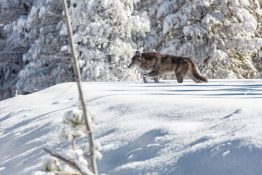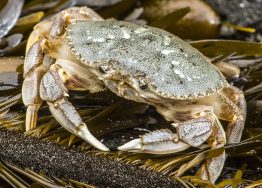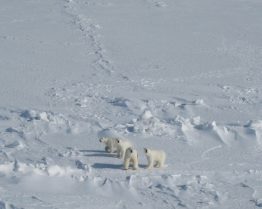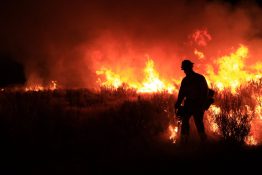Almost all of the world’s 31 largest carnivore species, including gray wolves, grizzly bears, cheetahs and lions, have been impacted by human development and activity. Most of these animals have seen their range and populations decline over the past century, and many are listed as threatened by international conservation groups. As conservationists and scientists consider if and how to bring back these species in significant numbers across their historical ranges, many potential conflicts arise: Will the animals pose a threat to humans or livestock?
Read more at UW News »How Dungeness crabs’ complex lifecycle will be affected by climate change
New research on the Pacific Northwest portion of the Dungeness crab fishery, which spans the West Coast of the U.S. and Canada, projects how this crustacean will fare under climate change. Results show that by the end of this century, lower-oxygen water will pose the biggest threat. And while these crabs start as tiny, free-floating larvae, it’s the sharp-clawed adults that will be most vulnerable, specifically to lower-oxygen coastal waters in summer.
Read more at UW News »Sustaining polar bear populations in the face of climate warming
Polar bears capture the imagination like few other wild animals. Adorable and roly-poly as snow-white cubs, they grow into massive hunting machines, supremely adapted to the harsh landscapes of the Arctic. Iconic the world over, many of us only dream of the chance to see one outside of the zoo. Polar bears have also become a symbol of an environment that’s changing unfavorably.
Read more »Bigleaf maple decline tied to hotter, drier summers in Washington
As its name suggests, the bigleaf maple tree’s massive leaves are perhaps its most distinctive quality. A native to the Pacific Northwest’s wet westside forests, these towering trees can grow leaves up to 1.5 feet across — the largest of any maple. But since 2011, scientists, concerned hikers and residents have observed more stressed and dying bigleaf maples across urban and suburban neighborhoods as well as in forested areas.
Read more at UW News »Dryer, warmer night air is making some Western wildfires more active at night
Firefighters have reported that Western wildfires are starting earlier in the morning and dying down later at night, hampering their ability to recover and regroup before the next day’s flareup. A study by University of Washington and U.S. Forest Service scientists shows why: The drying power of nighttime air over much of the Western U.S. has increased dramatically in the past 40 years.
Read more at UW News »





